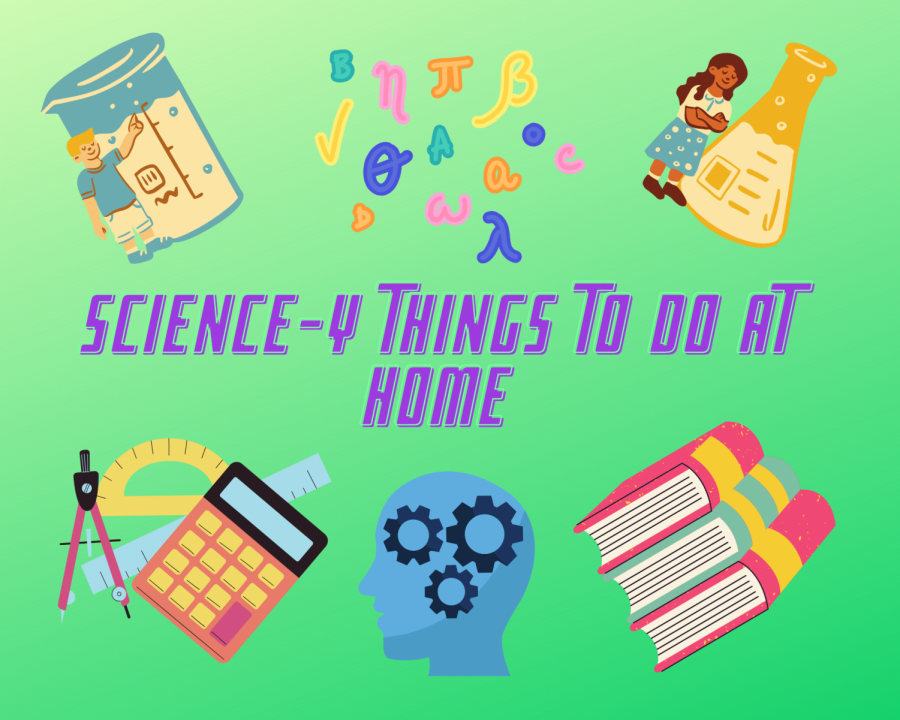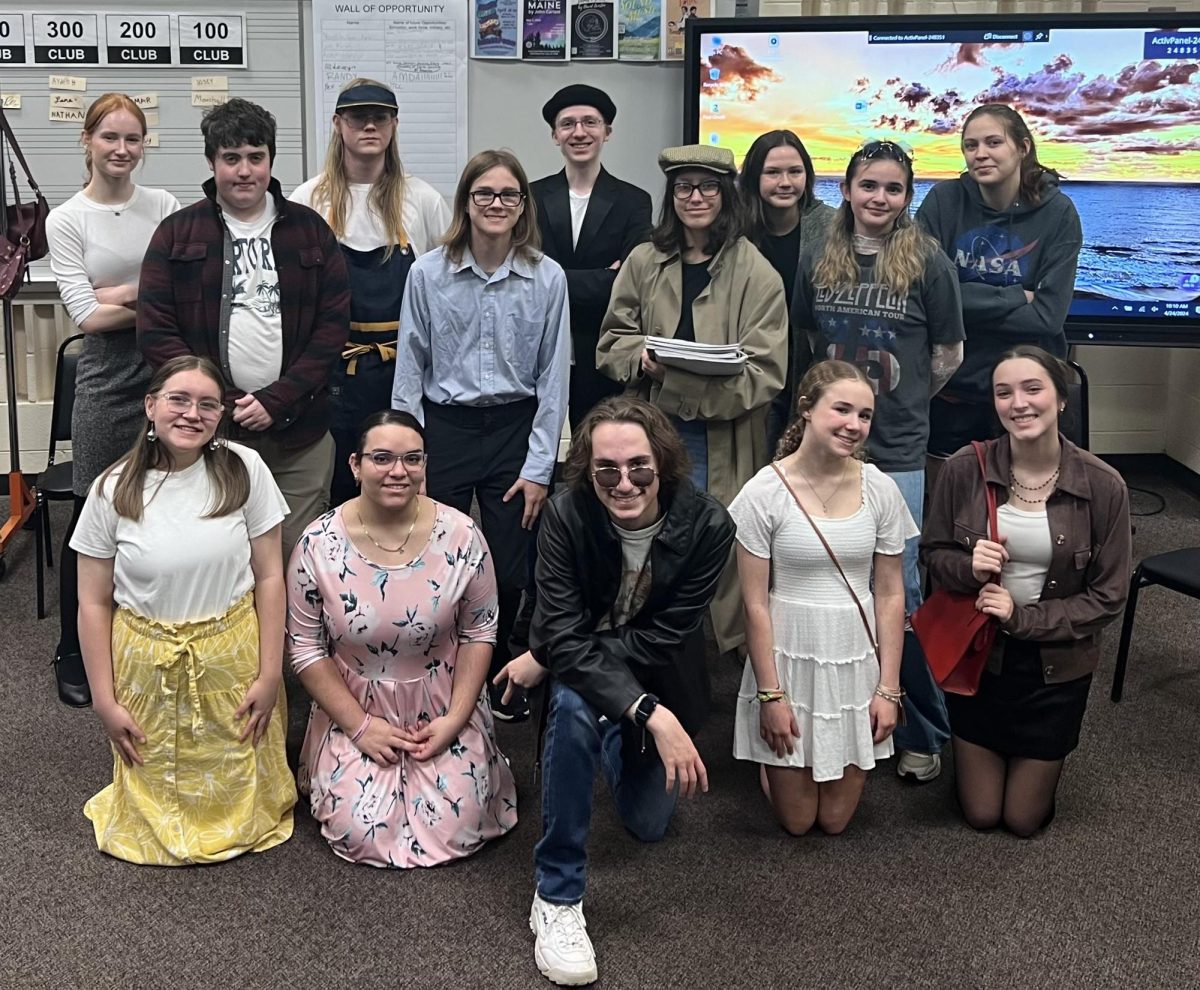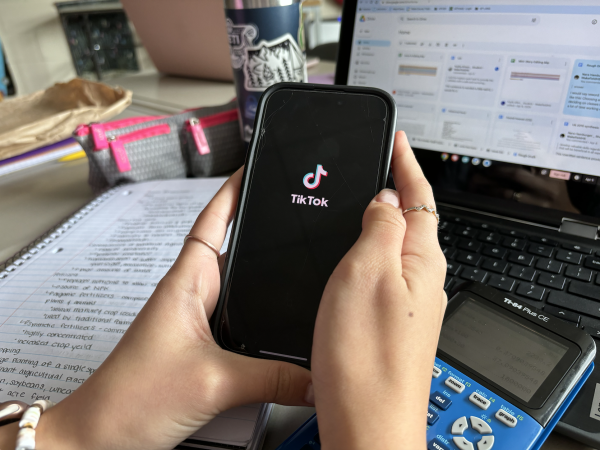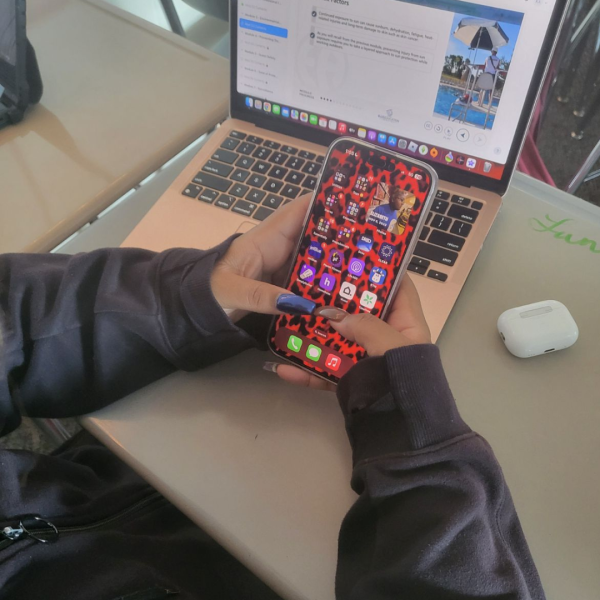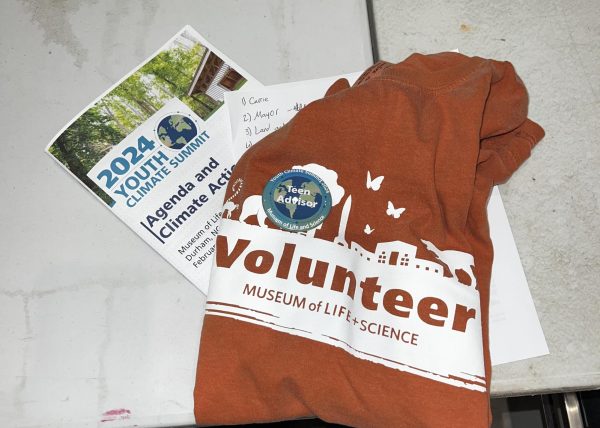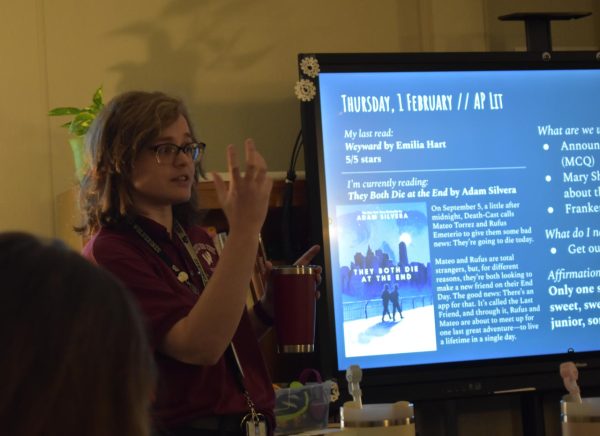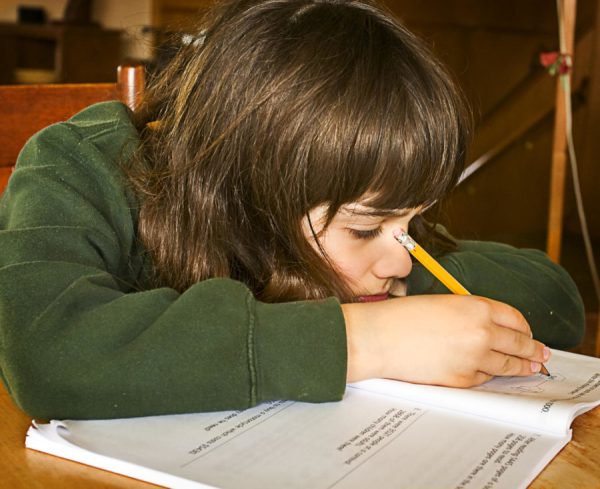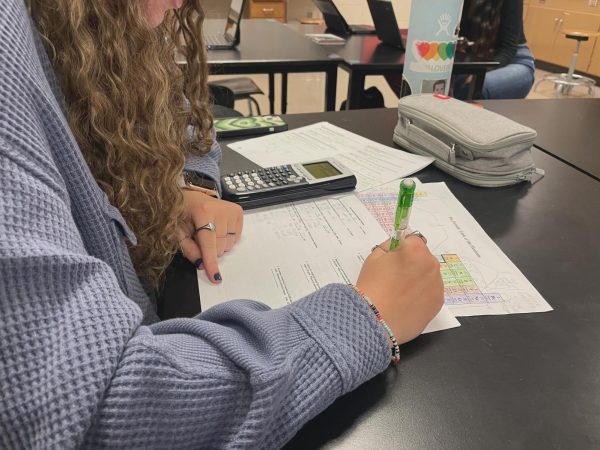No beakers in your room: STEM-related activities to do at home
A collection of STEM-related items that students can think about doing whilst at home.
October 21, 2020
As COVID-19 is still going strong, science-related school activities such as Science Olympiad, Science Honor Society and the chance to do fun science experiments in science classes are limited. With students not able to participate in science experiments in class and not being able to collaborate in science extracurricular activities, what are they able to do at home?
“Students cannot conduct experiments at home, without the supervision of a teacher. However, we do research projects and students share their findings in a poster session, as if they were at a professional conference,” said Denise Furr, a chemistry teacher at Wakefield. “We also do weekly research on a current event in science and have debates that allow students to share their ideas about recent issues and progress in various science fields.”
With students stuck at home, many are finding ways to entertain themselves or even help others by doing their own science experiments, creating their own apps or finding STEM-related ways to help battle COVID-19. STEM students and professors at multiple universities, for example, have started making ventilators to give to hospitals who need them the most. A team of doctorate students at the University of Washington are working on a cough-detection app. A robotics team in San Diego has already made 300 face shields through 3D printing. While the majority of these projects are made by college students, middle and high school students can create some of their own STEM-related activities, too.
On the internet, there are many STEM kits available, as well as free websites that teach STEM-related topics such as Khan Academy. More specific websites that focus on certain skills, CodeCamp for coding practice. Many other resources can be found by a simple search or with the help of a teacher or fellow STEM-interested classmate or friend.
“Of course, there is Khan Academy, but there are a lot of fun things to look at. Crash Course has a huge amount of summarized material on a wealth of topics. Smarter Every Day has a whole pile of engineering videos that are entertaining,” said Michael Pearce-Ros, senior.
We also do weekly research on a current event in science and have debates that allow students to share their ideas about recent issues and progress in various science fields
— Furr
Other students have found a more hands-on approach to studying science at home.
“I have been taking care of my house plants,” said Madeline Policastro. “This doesn’t seem like a very scientific thing, but it actually really is. I’ve had to study how different soils affect my plants to find the best one for each of them.”
Even though a lot of students are stuck at home right now and cannot have beakers and chemicals in their rooms, with the help of the internet and teachers, ideas for practicing and growing STEM skills are still applicable.
“I have had to take traditional in-class hands-on activities and reformat them for distance learning,” said Laura Stiles, a fellow science teacher and Science Department Chair. “It has resulted in me doing the lab as a demo for the students that they either watch live or through a recorded meet.”
Scientists are creators who ask questions. The question at hand now is how to bring STEM creativity into your home?



